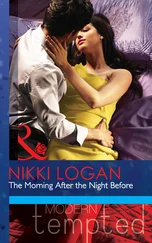But that did not account for it either: the eight pieces, the alternately derisive and punitive tone, the pressure to recant. And the prose itself — there can be no clearer indication than this sort of writing that there is no news, no information, no substance there. I had written a sentence. Someone, offended, had asked me to document the sentence. I had said I would do so. Not much of a story, one would have thought. In the days when there was still a standard of reporting, and of editing, “those who have read just about all the books on Watergate” and “those most steeped in Watergate lore,” whoever they might be, would have been utterly unacceptable, in the Times , as sources. If the reporter had any genuine interest in the matter, she would have “steeped” herself in “Watergate lore” and read the “books on Watergate” (beginning perhaps with Judge Sirica’s book) herself. But no. Here’s what it was. At one point, in answer — not, as Ms. Barringer would have it, to the question “Why wait?” to which I gave, repeatedly, the answer that I was not waiting at all — but to a repetition of yet another ad personam question, I said, “How can you be a working journalist and phrase a question as silly as that?”
This is not the way you are supposed to talk to the Times . I knew that. But here obviously was the core of the offense, and so seriously did Ms. Barringer take it that she attached it to the wrong question, and so seriously did the Times take it that the editorial was virtually based on this intimation on my part that a Times reporter could phrase a deeply silly question. “Even more irresponsible,” the editorial went on, was a line, inaccurately quoted, in which I asked Ms. Barringer whether she worried “that much about reputation.” “Of course we do,” the editorial actually said. (Of course .) “And so should she.”
I have always known, and even written, that the strongest, perhaps sole remaining taboo on freedom of expression, in this country, is any criticism of the press. But here I had not only questioned a received idea cherished by the Times but I had not been sufficiently deferential to this Times reporter — and the whole Times bureaucracy, instinctively, needed to stamp out this disrespect . It would, of course, have gone without saying, until the Times , through Ms. Barringer, cited it with indignation, that a writer does choose what to write and when to write it. Now the matter had come to this: If you do not accept some cliché, bromide, or myth of theirs, and are not sufficiently deferential to them, this is not just insubordination. It is a breach of ethics .
You must be admonished. You must be taught a lesson, so that other people may learn from it. Not only is your own reputation affected. You must, above all, recant. And this, this last issue — retraction — is where the question is inescapably, dangerously, altered. And why the whole series of attacks addresses something more serious than my little book. Look again at Ms. Barringer’s formulation:
As it stands, Ms. Adler and Simon & Schuster, a unit of Viacom, are either cheaply smearing Judge Sirica — with legal impunity — or they have evidence. But neither the publisher nor the author shows any urgency about resolving the issue, either by retracting the accusation or establishing its accuracy.
This is nothing if not a coercive formulation, pressure not just on a writer but on her publisher, and even her publisher’s owner, “Simon & Schuster, a unit of Viacom,” to retract. Whenever — and I think this is true without exception — you find a publication, or a journalist, calling for a retraction or a recantation by, of all things, a single writer (and actual pressure on her publisher, “cheaply smearing”), you know what sort of realm you are in. It is a realm where received ideas are not just propagated but enforced — and it is an unmistakably totalitarian realm. What “issue,” after all, could be “resolved” by a retraction? Nothing about Sirica, certainly. The only issue would be the power of The New York Times , in the person of Ms. Barringer and other writers, to coerce retractions. What this whole series amounted to was a show trial, with serial accusers, disinformation, designed to end, as show trials do, with recantations.
Well, it nearly worked. The Times , of course, is still drawing on trust and respect well earned some years ago. In the course of this recent episode, Joseph Lelyveld, the executive editor, told me as early as April 3 that he had no idea the Times had published so many disparaging pieces about my book. He would look out for this sort of thing. Later, he said he would, if it had been his call, have run my letter (revised, of course, to conform with Times policy), but he had no jurisdiction over the Letters column. I knew he had no jurisdiction over the editorial page or the op-ed pieces. (Either John Dean is inspired, and writes, submits his work, and is edited with extraordinary speed, or his piece was solicited right after I told Ms. Barringer, to her evident disappointment, that my source was not G. Gordon Liddy.) The editorial board, of which, as we know, Ms. Barringer’s husband is a member, does have jurisdiction over both pages. Mr. Lelyveld is, however, in charge both of Corrections and the Editor’s Note. On April 7, he sent me a fax. “I try to lean over backwards in matters of corrections and editor’s notes,” he wrote. He, and Ms. Barringer and her editor, had considered my note. “At this point the only solution I can see,” he concluded, “is for us all to give the matter a rest.” This was wonderful. The Times had attacked me eight times (only the last four of them had even the pretext of Judge Sirica), citing (perhaps this goes without saying) exclusively hostile “sources.” These pieces had directly impugned my “ethics.” They would not print a letter, an Editor’s Note, or a Correction. In fairness he now felt that the only solution “for all of us” was to let the matter rest. Of course, the paper did not let it rest. Two days later, there was the news item in the Week in Review.
Other journalists — in solidarity and taking their cue from the trusted and venerated Times —checked in. Some were apparently under the impression that I had used the Sirica passage as a sort of headline, to “hype” my book. Why else, after all, would the Times have devoted so much space and so many pieces to it? Piece after piece, in one medium after another, accepted as fact John Dean’s speculation that my source was Liddy. One spoke of my “trying to sell” my book with a libel that “shames all caring, responsible journalists.” That sort of thing. A media reporter for the Daily News wrote, on the basis of the Times editorial, that my book had been “plagued by” a series of “forced retractions.” In a novel use, by a media reporter, of the formula, she wrote, “Ms. Adler was unavailable for comment”—on the basis, perhaps, of having made no effort whatsoever to reach me. Perhaps the most surprising instance of this herd of indignant Times -inspired colleagues occurred on April 8, on CNN’s Capital Gang . Mark Shields, not usually, I would have thought, so orthodox a member of the guild, said, “And now for ‘The Outrage of the Week.’ ” I had “defamed,” he said, Judge Sirica, who was (in the by now altogether obligatory mantra) a scrupulously honest hero. “Renata Adler owes the family John Sirica loved and the nation he served so well an immediate and public apology.”
Owing the nation an immediate and public apology does seem a bit much. But the Times ’s campaign began, I suppose, with that first letter from the editor who subsequently “said he had decided to distance himself.” I should have left the galleys as they were. There followed the whole set of pieces, right through the almost laughably disingenuous characterization of John Dean. Disinformation. Show trial. Confession. Retraction. Not just yet. The Times , financially successful as it may be, is a powerful but, at this moment, not very healthy institution. The issue is not one book or even eight pieces. It is the state of the entire cultural mineshaft, with the archcensor, still in some ways the world’s greatest newspaper, advocating the most explosive gases and the cutting off of air.
Читать дальше
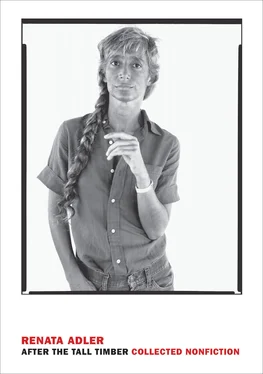
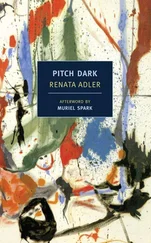


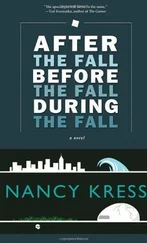
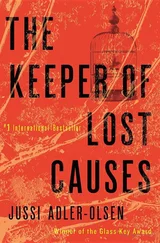
![Джеффри Арчер - The Short, the Long and the Tall [С иллюстрациями]](/books/388600/dzheffri-archer-the-short-the-long-and-the-tall-s-thumb.webp)
